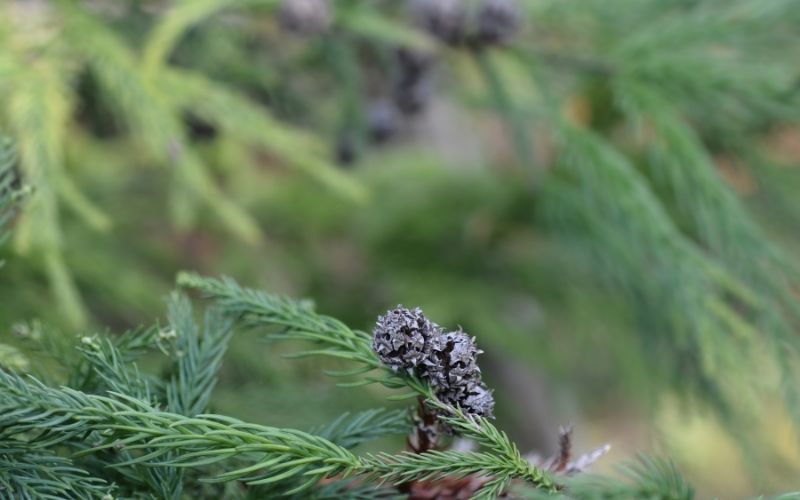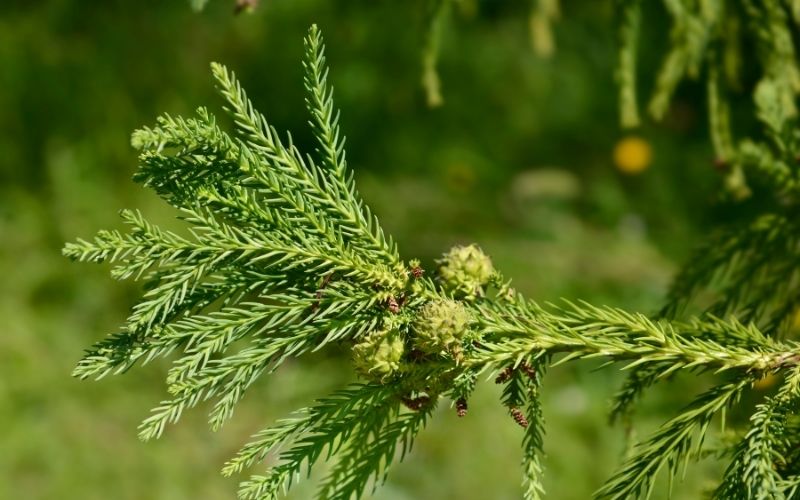Japanese cedar (Cryptomeria japonica) is a beautiful, evergreen tree that is often used in landscaping and gardens.
The question of whether or not Japanese cedar will grow in shade is a common one, as many people are interested in using this tree to create privacy screens or add beauty to their garden without taking up too much space.
The good news is that Japanese cedar will indeed grow in shade! This tough tree is tolerant of a wide range of conditions, including shady areas. However, it’s important to note that Japanese cedar will grow more slowly in shade than it would in full sun. If you’re patient and give your tree the care it needs, you’ll eventually see it reach its full potential.

Here are a few tips to help you grow Japanese cedar in shade:
- Choose a spot that gets some sun during the day, even if it’s just a few hours. Japanese cedar needs some sun to thrive, so a completely shaded area is not ideal.
- Make sure the soil is well-drained. Japanese cedar does not like sitting in wet soil, so make sure your garden bed has good drainage.
- Water regularly, especially during dry periods. Keep the soil moist but not soggy, and don’t let it dry out completely.
How big do Japanese cedars get?
Japanese cedar is a fast-growing tree, reaching up to 10 feet tall in just 10 years.
Mature trees can reach up to 100 feet tall and 40 feet wide, making them a good choice for privacy screens or windbreaks.
Even in shady conditions, Japanese cedar will eventually reach its full size potential.
Are Japanese cedars invasive?
No, Japanese cedar is not an invasive species.
In fact, it’s often used in landscaping and gardening because of its beautiful evergreen foliage and tolerance of a wide range of conditions.

What are the japanese cedar tree benefits?
In addition to being a beautiful addition to any garden, Japanese cedar has a few other benefits.
It’s tolerant of poor soil conditions, drought, and salt spray, making it a good choice for coastal areas.
Japanese cedar is also resistant to damage from deer and rabbits.
How do you plant Japanese cedars?
Japanese cedar can be propagated by seed, cuttings, or grafting.
If you’re planting Japanese cedar from seed, it’s best to sow the seeds in fall.
For cuttings or grafting, late spring is the best time to plant.
When planting Japanese cedar, choose a spot that gets some sun during the day and has well-drained soil.
Dig a hole that’s twice as wide as the root ball and just deep enough so that the roots are covered.
Gently backfill the hole with soil, being careful not to compact it too much. Water thoroughly after planting.
Caring for Japanese Cedar
Once your Japanese cedar is planted, it’s important to give it the care it needs to thrive.
Water regularly, especially during dry periods, and fertilize yearly with a balanced fertilizer.
You can also prune Japanese cedar to shape it as you like.

Are Japanese cedars evergreen?
Yes, Japanese cedar is an evergreen tree, meaning it will keep its foliage all year long.
This makes it a beautiful addition to any garden, as it will provide interest even during the winter months.
How do you fertilize Japanese cedar trees?
Fertilize Japanese cedar trees yearly with a balanced fertilizer.
Apply the fertilizer in early spring, before new growth begins.
Follow the manufacturer’s instructions for how much and how often to apply the fertilizer.
How do you prune Japanese cedar?
Pruning is not necessary for Japanese cedar, but you can prune it if you want to shape the tree or control its size.
To prune Japanese cedar, wait until late winter or early spring, before new growth begins.
Cut back any dead or damaged branches first, then trim back any long or out-of-place branches.
You can also thin out the foliage if needed. When pruning, make sure to use sharp, clean pruning shears to avoid damaging the branches.
Wrapping up
Japanese cedar is a beautiful evergreen tree that’s perfect for privacy screens or windbreaks.
It’s also tolerant of poor soil conditions and salt spray, making it a good choice for coastal areas.
With proper care, Japanese cedar will thrive and provide beauty to your garden for years to come.







